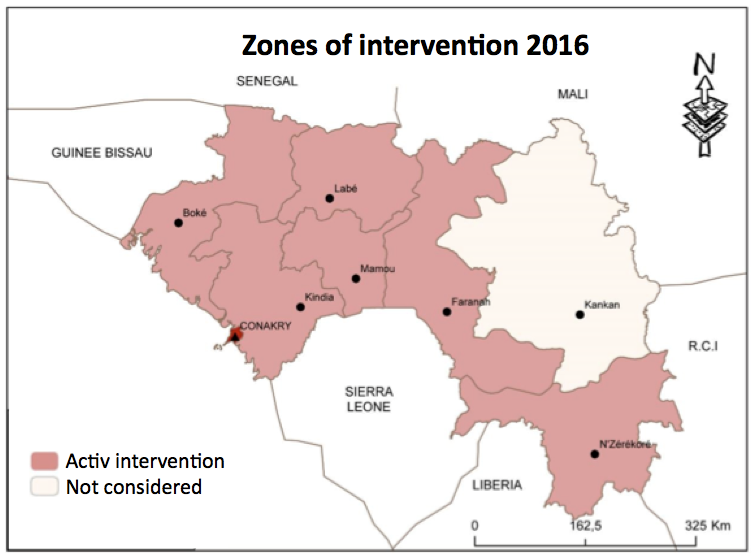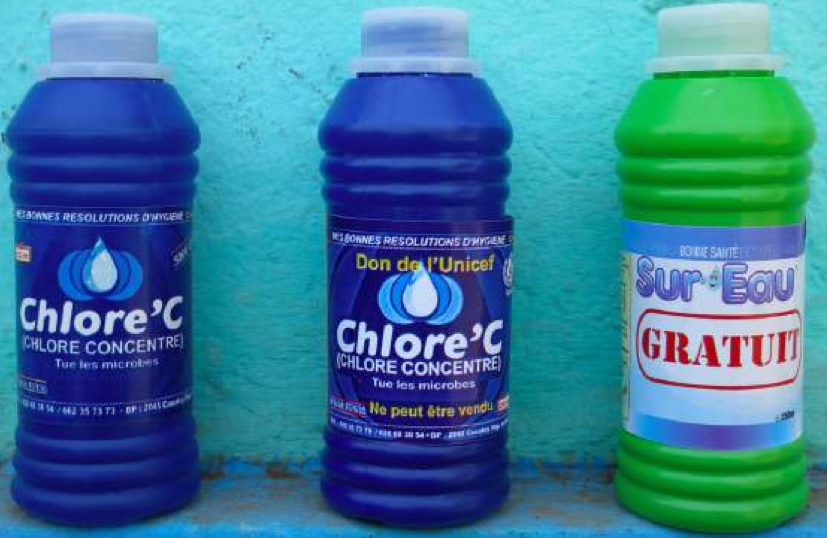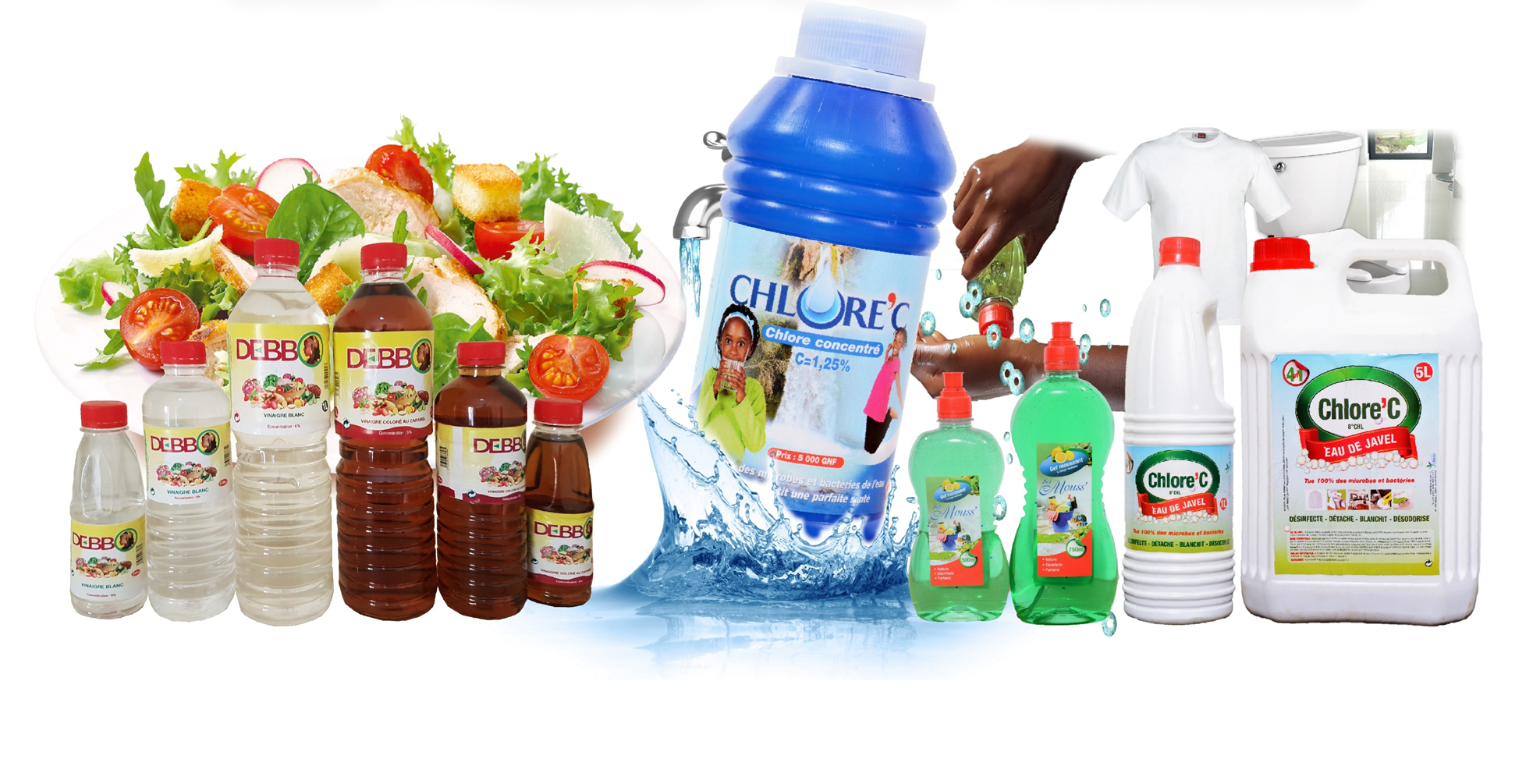Executive Summary
This case study supports and illustrates the theoretic factsheet "Smart partnering" with practical insights.
Tinkisso – Choosing the right partners to leverage growth

Tinkisso-Antenna (subsequently Tinkisso) is an NGO based in Conakry, the capital of Guinea. It uses entrepreneurship and market based approaches in order to produce and market liquid chlorine in different regions of the country. The project has been initiated in 2007 in order to fight the cholera epidemic in the country. With the use of WATA™ technology chlorine is produced locally and sold in a 250ml flask that goes by the name of Chlore’C (Chlore concentré = concentrated chlorine). The subsequent significant decrease in number of diarrhoea and cholera cases within the intervention zone cemented a multilevel partnership and built the basis to leverage this initial success.
Based on this success Tinkisso developed a diversified distribution strategy with direct sales to urban communities. This was done through a reseller network (kiosks, pharmacies, sales points) and institutional channels (Ministry of Health, UNICEF and Public Services International (PSI)) that are operating in 5 provinces (Conakry, Boké, Kindia, Mamou and Labé as shown in the map above).

buyers. Source: Antenna, 2016
Tinkisso was able to increase sales significantly over time, especially due to reoccurring cholera outbreaks and the Ebola crisis in 2012. During these humanitarian disasters, Tinkisso started to partner with UNICEF and PSI as customers and for social marketing activities. Chlore’C was sold to UNICEF and distributed for free in certain areas of intervention. Tinkisso also produced and branded “Sur Eau” (green flask in picture), the direct competitive chlorination product in the market through a contract with PSI. After historically high sales figures in 2015 (over 5 million bottles sold), specifically due to the collaboration with the institutional partners, the social venture had to deal with a market disruption in 2016: Ebola has officially been banned and several humanitarian agencies indeed freely distributed their aging chlorine stock to population, flooding the market with chlorine free of cost, ending up with destroying the commercial market. Unfortunate for Tinkisso do people feel safe again after the Ebola crisis was officially banned and they don’t see a need in proper water treatment anymore. These circumstances led to a significant reduction in sales in 2016 with around 700,000 bottles sold. In order to deal with this challenge, Tinkisso decided to diversify its product portfolio (liquid soap, vinegar, bleach – see picture below) and to transition to a limited company structure end of 2017 (DUVERNAY & CAMARA, 2016; KISSLING, 2018).

Lessons learnt from establishing institutional partnerships
- Choosing the right partner is challenging. Although Tinkisso-Antenna was able to establish important partnerships to sell its product to UNICEF, Ministry of Health and PSI, it led also to dependencies. If your company relies on a few customers only there is a risk of lacking sustainability if the partnership ends.
- During the collaboration with PSI, there were reoccurring problems with unpaid bills, putting Tinkisso-Antenna in liquidity problems. The situation with unpaid bills can unfortunately always occur, even in collaboration with reputed organisations. To mitigate this risk a clear penalty system could be developed or payments (partial or total) requested before the products are distributed.
- Clearly developing a long-term strategy with your partners is key in order to create a sustainable market that is able to serve the people sustainably over a long period of time and not only during emergencies. Accordingly Tinkisso could have developed Memorandums of Understanding (MoU) to clearly map a sales and distribution strategy that benefits the development of the market and does prohibit swamping the market with stocked products.
- Even branding the freely distributed product of PSI as Sur Eau, in order to prevent market disruption, was not fully successful and demand decreased tremendously after PSI’s order decreased. For a company it is very interesting to sell its product in bulk to NGOs, as distribution costs are lower and planning easier. Nevertheless a safe water enterprise needs to reflect on bulk sales’ to NGOs and its effect on the market development if products are distributed for free. People are likely not willing to pay for the product after the emergency.
- Due to Cholera and Ebola epidemics the demand for Chlore’C skyrocketed. While it allowed Tinkisso to grow fast and to leverage its production, it however came together with several challenges. As UNICEF was purchasing large amounts of chlorine bottles, it let Tinkisso-Antenna to break-even in 2014 but it also hampered sustainable market creation as chlorine flasks were distributed for free. This shows also the complexity of transforming short-term humanitarian action towards long-term development and the creation of market-based approaches. In terms of smart partnering innovation is needed in defining public-private-partnership collaboration models that can increase scale of household water treatment solutions (HWTS).
- Just relying on selling one purification product is somewhat risky in terms of revenue. Introducing additional products to its product portfolio (based on a thorough market survey of the local/national context) can balance this risk. In this sense a company should also reflect on potential partnership with other companies that do produce complementing products. Accordingly the company’s impact can be increased and already developed sales channels leveraged.
Recommendations to establish sustainable smart partnerships
- Take enough time into account to establish your partnerships and develop a clear mutual and long-term strategy. This will allow you to reach customers efficiently and in a sustainable manner over a long period of time.
- Don’t be afraid to connect with the local authorities and international organisations. It might take time to establish a fruitful partnership, but it is worthwhile investing energy in it. International organisations and governments do have an interest in bottom-up approaches. Even if you are a small entity you are important and have your voice, don’t hesitate to bring in your own opinion in discussions on higher levels. This requires a pro-active role of you as entrepreneur and goes along with different aspects and skills that might be interesting for you as entrepreneur. Having an entrepreneurial attitude is more than just being transparent, flexible, trustworthy, and adaptable to difficult situations, it contains also leadership, taking responsibility, hard-working etc. But one of the most important aspects is to dare and having a healthy self-confidence in order to reach out to the people that are necessary in helping you grow.
Sustainable access to drinking water through the development of a social enterprise in Guinea
Field study on Tinkisso-Antenna and the institutional context in Guinea regarding safe water
Antenna Foundation’s WATA™
Antenna Foundation’s WATA™ technology converts salt and water with a simple electrolysis process in sodium hypochlorite.
https://www.antenna.ch/en/activities/water-hygiene/range-wata/ [Accessed: 20.04.2018]

